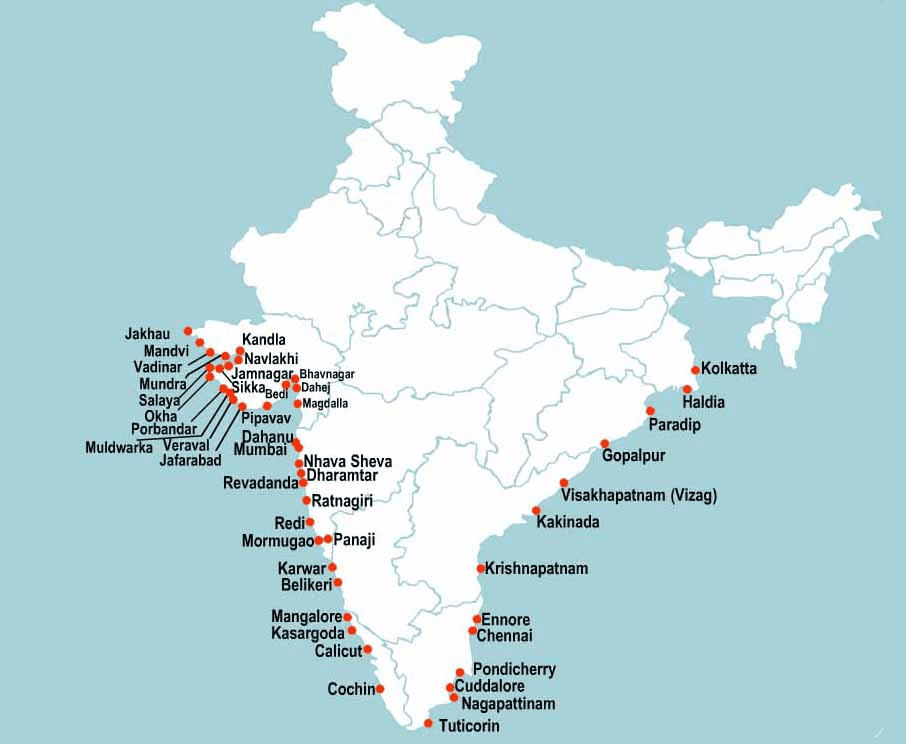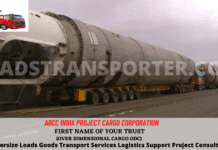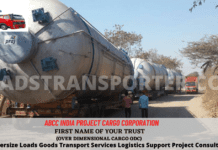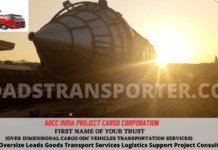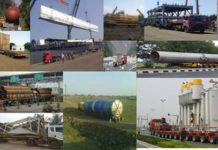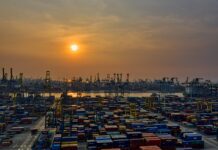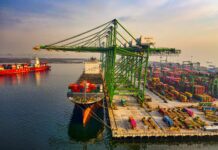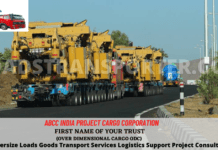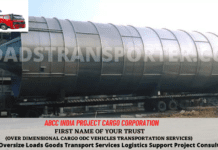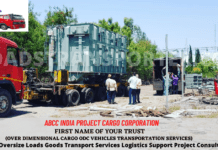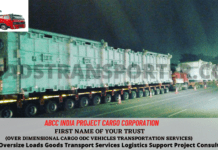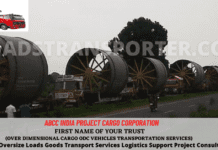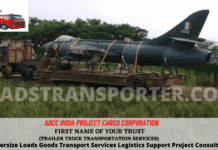Industry Overview
What is Sea port and why that is important ?
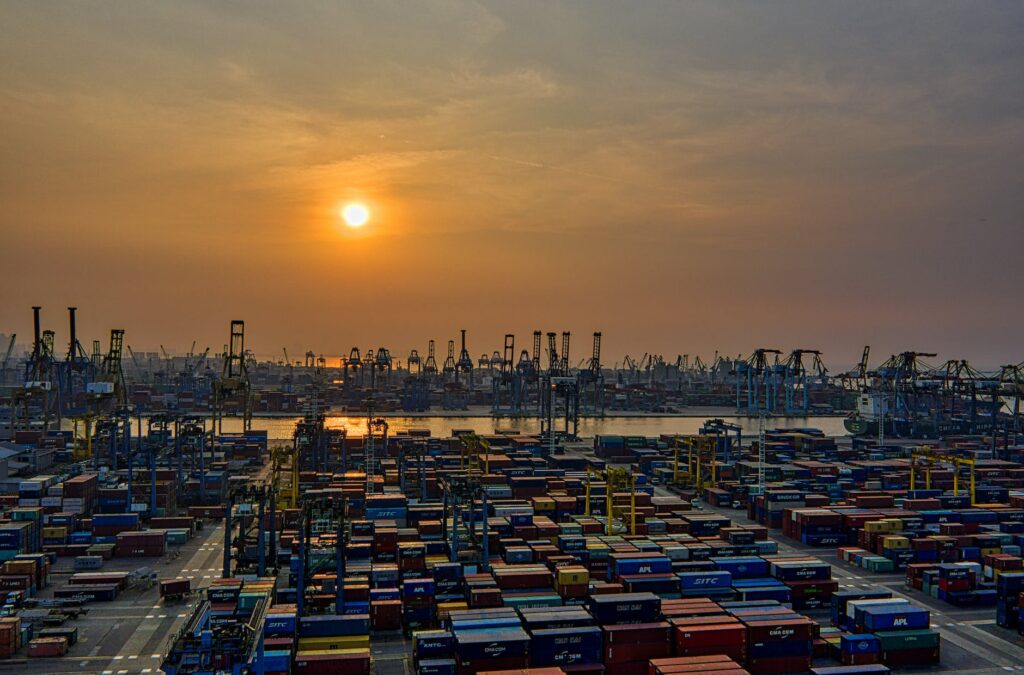
A seaport, also known as a harbor or port, is a maritime facility located on a coastline, estuary, or river that allows ships to dock and cargo to be loaded and unloaded. It serves as the crucial intersection point where land and sea transportation systems meet, enabling the efficient movement of goods and people around the world.
Here’s why seaports hold immense importance:
1. Global Trade: Over 80% of global trade by volume is transported via sea routes. Seaports act as vital gateways for international trade, facilitating the import and export of goods between countries. They serve as hubs for various economic activities, including:
Customs clearance
Warehousing and storage
Cargo handling and logistics
Shipping and freight services
2. Economic Growth: Seaports are economic engines that drive growth and development in surrounding regions. They create significant employment opportunities in various sectors like transportation, logistics, warehousing, and related services. Additionally, seaports attract investment in infrastructure, industries, and related businesses, contributing to the overall economic prosperity of the region.
3. Connectivity and Supply Chains: Seaports play a crucial role in global supply chains, connecting producers and consumers across vast distances. They ensure the efficient flow of goods and materials, contributing to the timely and cost-effective delivery of products worldwide.
4. National Security: A strong network of seaports is vital for national security. They serve as strategic locations for naval bases and play a crucial role in maritime defense and border security.
5. Technological Advancements: Seaports are constantly evolving, adopting new technologies like automation and digitalization to improve efficiency, security, and sustainability. This not only enhances operational capabilities but also contributes to the development of new technologies and advancements in the maritime sector.
In conclusion, seaports are essential infrastructure for global trade, economic development, and international connectivity. They play a crucial role in fostering economic prosperity, facilitating trade, and securing national interests. As the world becomes increasingly interconnected, the importance of seaports is projected to continue growing in the years to come.
How many sea port in India ?
India boasts a vast coastline and a rich maritime history reflected in its numerous sea ports. There are two categories:
Major Ports (13): These are overseen by the Central Government and handle a significant portion of the country’s cargo traffic. Examples include Mumbai Port, JNPT, Chennai Port, etc.
Minor Ports (205+): Managed by state governments or private entities, these ports cater to specific industries or regions. They play a crucial role by reducing pressure on major ports and handling specialized cargo.
The exact number of minor ports can fluctuate as new ones are developed. In total, India has approximately 218 or more sea ports, making it a significant player in maritime trade. This extensive network facilitates import, export, and coastal movement of goods, contributing greatly to the nation’s economy.
Which port is known as queen of Arabian sea ?
The port known as the “Queen of the Arabian Sea” is Cochin Port, located in Kochi, Kerala, India. This nickname reflects its historical significance as a major port on the Arabian Sea coast and its importance in trade and commerce in the region.
India’s Maritime Evolution (History of water transport in india)
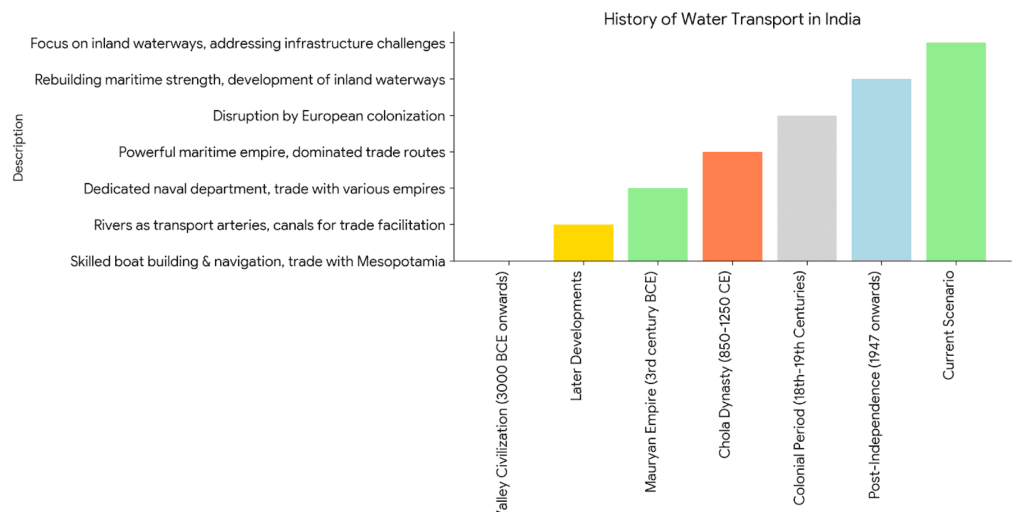
India’s maritime history is a rich tapestry woven over millennia. From the Indus Valley civilization’s thriving trade networks in 3000 BC to its current aspirations as a regional maritime power, India’s connection to the sea has been profound.
Ancient Era (3000 BCE – 13th Century CE)
The Indus Valley civilization, flourishing around 3300-1300 BCE, laid the groundwork for India’s maritime prowess. Evidence suggests a sophisticated understanding of shipbuilding and navigation, with thriving trade links to Mesopotamia. Excavations at Lothal in Gujarat revealed the world’s first known dockyard, a testament to their maritime expertise.
Classical Age (13th Century BCE – 8th Century CE)
The Mauryan Empire (3rd century BCE) established a well-defined “naval department” to oversee trade and security. Trade flourished with Southeast Asia, West Asia, and the Roman Empire. During this period, Indian sailors ventured far and wide, carrying spices, textiles, and other goods.
Medieval Era (8th Century CE – 18th Century CE)
The Chola Dynasty (850–1250 CE) emerged as a powerful maritime empire. With a formidable navy, they dominated trade routes in the Indian Ocean and beyond. They also actively spread their cultural influence across Southeast Asia.
Colonial Era (18th Century CE – 1947 CE)
European colonization significantly impacted India’s maritime development. The Portuguese, Dutch, French, and British established their dominance, disrupting traditional trade networks and hindering indigenous shipbuilding capabilities.
Post-Independence Era (1947 CE – Present)
After independence in 1947, India began rebuilding its maritime strength. The Indian Navy played a crucial role in the 1971 Bangladesh Liberation War and has since emerged as a significant regional power.
Modern Developments
India is now actively pursuing its maritime ambitions. The Indian Navy is undergoing modernization, with a focus on acquiring aircraft carriers, submarines, and other advanced weaponry. The government’s Sagar Mala Project aims to develop modern ports and improve logistics infrastructure.
Challenges and the Future
India faces several challenges in its maritime evolution. These include maintaining security in the Indian Ocean Region, competing with China’s growing naval presence, and developing its domestic shipping industry.
| Period | Description |
|---|---|
| Indus Valley Civilization (3000 BCE onwards) | Skilled boat building and navigation, trade with Mesopotamia |
| Later Developments | Rivers as transportation arteries, use of boats, canal systems |
| Mauryan Empire (3rd century BCE) | Dedicated naval department, trade with other empires |
| Chola Dynasty (850–1250 CE) | Powerful maritime empire, dominant trade routes |
| Colonial Period (18th-19th Centuries) | Disruption by European colonization |
| Post-Independence (1947 onwards) | Rebuilding efforts, focus on inland waterways |
Despite these challenges, India’s maritime future appears bright. With its rich maritime heritage, strategic location, and growing economic and military strength, India is poised to play a key role in the Indo-Pacific region in the years to come.
Sea Port Evolution in India: A Historical Journey
Here’s a chart listing both major and minor sea ports in India with various details:
| Port Name | Age (Established) | Size (Area) | Address | Ownership | Business | Major Commodity Deals | Economic Impact | Why Considered Best |
|---|---|---|---|---|---|---|---|---|
| Mumbai Port Trust | 1873 | 400 hectares | Mumbai, Maharashtra | Government | Container handling, bulk cargo, cruise | Petroleum, chemicals, textiles | Major contributor to India’s maritime trade; gateway to the Indian subcontinent; key logistical hub | Strategic location, historical significance, diverse cargo handling capabilities |
| Jawaharlal Nehru Port | 1989 | 1,860 hectares | Navi Mumbai, Maharashtra | Government | Container terminal operations | Containerized cargo, petroleum | Largest container port in India; handles majority of container traffic; significant for international trade | State-of-the-art infrastructure, deep draft, specialized container handling facilities |
| Chennai Port Trust | 1881 | 663 hectares | Chennai, Tamil Nadu | Government | Container handling, bulk cargo, petroleum | Automobiles, coal, iron ore | Key port on the east coast; vital for trade with Southeast Asia; handles diverse cargo types | Strategic location, well-connected to road and rail networks, modern infrastructure |
| Kolkata Port Trust | 1870 | 670 hectares | Kolkata, West Bengal | Government | General cargo, bulk cargo, container handling | Jute, coal, iron ore | Oldest operating port in India; strategic for trade with Nepal and Bhutan; handles various cargo types | Historic significance, riverine port facilitating inland waterway transportation, diversified cargo handling |
| Visakhapatnam Port | 1933 | 200 hectares | Visakhapatnam, Andhra Pradesh | Government | Iron ore, coal, petroleum | Iron ore, steel, fertilizers | Largest port in terms of cargo handled on the east coast; major contributor to the state’s economy | Natural harbor, deep draft, efficient cargo handling facilities |
| Paradip Port Trust | 1966 | 7,742 hectares | Paradip, Odisha | Government | Bulk cargo, petroleum, container handling | Iron ore, coal, crude oil | Strategically located on the east coast; handles significant bulk cargo volumes; crucial for mineral exports | Largest port in Eastern India, deep-water channel, continuous expansion and modernization |
| Kandla Port Trust | 1931 | 12,610 hectares | Kandla, Gujarat | Government | Bulk cargo, container handling | Petroleum products, grains | Largest port by volume of cargo handled; major trade gateway to northwest India; significant for export-import trade | Largest port by volume, extensive hinterland connectivity, specialized facilities for diverse cargo types |
| Mormugao Port Trust | 1888 | 120 hectares | Mormugao, Goa | Government | Iron ore, coal, general cargo | Iron ore, manganese ore, bauxite | Key port for mineral exports; serves as a major hub for Goa’s industrial and commercial activities | Natural harbor, specialized facilities for bulk cargo handling, strategic location |
| Cochin Port Trust | 1928 | 250 hectares | Kochi, Kerala | Government | Container handling, bulk cargo, petroleum | Petroleum products, spices | Gateway to Kerala; handles diverse cargo types; significant for India’s seafood exports | Strategic location, natural harbor, well-developed infrastructure, efficient cargo handling facilities |
| New Mangalore Port | 1974 | 180 hectares | Mangalore, Karnataka | Government | Petroleum, container handling, bulk cargo | Petroleum products, coffee | Key port for petroleum imports; handles diverse cargo types; significant for Karnataka’s economy | Natural harbor, deep draft, modern infrastructure, efficient cargo handling facilities |
| Ennore Port | 2001 | 1,000 hectares | Chennai, Tamil Nadu | Government | Bulk cargo, container handling, petroleum | Coal, iron ore, petroleum products | Newest major port in India; equipped with modern facilities; strategic location on the east coast | State-of-the-art infrastructure, deep draft, specialized terminals for diverse cargo types |
| V.O. Chidambaranar Port | 1974 | 742 hectares | Thoothukudi, Tamil Nadu | Government | Container handling, bulk cargo | Coal, copper concentrate, containerized cargo | Major gateway for trade in southern India; handles significant containerized cargo volumes | Modern infrastructure, well-connected to road and rail networks, efficient cargo handling facilities |
| Tuticorin Port Trust | 1975 | 410 hectares | Thoothukudi, Tamil Nadu | Government | Container handling, bulk cargo | Coal, copper, spices | Strategically located on the southern tip of India; key for trade with Sri Lanka and Southeast Asia | Deep draft, specialized terminals, efficient cargo handling facilities |
| Haldia Port | 1966 | 6,360 hectares | Haldia, West Bengal | Government | Bulk cargo, container handling | Coal, petroleum products, chemicals | Strategic port on the Hooghly River; significant for trade with Nepal, Bhutan, and Northeast India | Riverine port, well-connected to inland waterways and rail networks, specialized terminals |
| Krishnapatnam Port | 2008 | 6,800 hectares | Nellore, Andhra Pradesh | Private | Bulk cargo, container handling | Coal, iron ore, fertilizers | One of the deepest ports in India; handles significant bulk cargo volumes; crucial for mineral exports | Modern infrastructure, deep draft, extensive hinterland connectivity, efficient cargo handling facilities |
| Kamarajar Port Limited | 2001 | 4,837 hectares | Chennai, Tamil Nadu | Government | Container handling, bulk cargo | Coal, petroleum products, containerized cargo | Formerly known as Ennore Port; strategic location on the east coast; equipped with modern facilities | State-of-the-art infrastructure, deep draft, efficient cargo handling facilities |
India’s maritime history is deeply intertwined with the evolution of its sea ports. Here’s a glimpse into this fascinating journey:
Ancient Era (3000 BCE – 13th Century CE)
Indus Valley Civilization (3000 BCE onwards): The earliest known evidence of ports comes from this period. Lothal, in Gujarat, is believed to be the world’s first known dockyard, showcasing their advanced maritime understanding.
Trade Hubs: Ports like Lothal, Barbaricum (modern Karachi), Barygaza, Muziris, Korkai, Kaveripattinam, and Arikamedu became crucial centers for trade along the Indus Valley Civilization and later empires. These ports facilitated trade with Mesopotamia, Southeast Asia, and beyond.
Classical Era (13th Century BCE – 8th Century CE)
Mauryan Empire (3rd century BCE): Established a well-defined “naval department” to oversee trade and security. Ports like Tamralipti (present-day Tamluk) gained prominence during this era.
Chola Dynasty (850–1250 CE): Emerged as a powerful maritime empire, actively using ports like Poompuhar and Nagapattinam to dominate trade routes in the Indian Ocean.
Medieval Era (8th Century CE – 18th Century CE)
Rise of Regional Kingdoms: Several regional kingdoms like the Gujarat Sultanate and the Vijayanagara Empire had flourishing ports like Surat, Calicut, and Mangalore. These ports catered to the spice trade and other forms of commerce.
Colonial Era (18th Century CE – 1947 CE)
European Arrival: The arrival of European powers like the Portuguese, Dutch, French, and British significantly impacted Indian ports. They established their own port facilities, disrupting traditional trade networks and hindering indigenous shipbuilding.
Focus on Exports: Ports like Bombay (Mumbai) and Calcutta (Kolkata) became centers for exporting raw materials to Europe.
Post-Independence Era (1947 CE – Present)
Modernization and Expansion: Following independence, India focused on modernizing and expanding its port infrastructure. Major ports like JNPT and Chennai Port were developed to handle increased cargo volumes.
Focus on Efficiency: The government introduced initiatives like the Sagar Mala Project to improve port connectivity and logistics efficiency.
Rise of Minor Ports: Minor ports are increasingly playing a vital role, catering to specific industries and reducing congestion in major ports.
Future Outlook
India’s sea port evolution continues. The focus is on:
Smart Port Technologies: Implementing automation and digitalization to improve efficiency and security.
Sustainable Practices: Adopting eco-friendly practices to minimize environmental impact.
Connectivity with Inland Waterways: Developing a robust inland water transport system to create a multi-modal transportation network.
By leveraging its rich maritime heritage and strategic location, India is poised to further strengthen its position as a key maritime player in the years to come.
Here are some of the important minor ports in India:
- Azhikkal Port, Kerala: Located at the mouth of the Valapattanam River, Azhikkal Port is known for handling timber, cashew nuts, and raw materials for plywood industries.
- Kannur Port, Kerala: A natural harbor on the Malabar Coast, Kannur Port handles exports of cashews, spices, and minor forest products.
- Kundapur Port, Karnataka: Situated on the shores of the Arabian Sea, Kundapur Port is a major exporter of iron ore and granite.
- Dahej Port, Gujarat: A prominent port in Gujarat, Dahej primarily handles chemicals, crude oil, and petroleum products.
- Jafrabad Port, Gujarat: Located on the Gulf of Cambay, Jafrabad Port is known for gypsum and salt exports.
- Marmugao Port, Goa: A well sheltered natural harbor on the Zuari River, Marmugao handles exports of iron ore and coal.
- Mangalore Port, Karnataka: Situated on the southwestern coast of Karnataka, Mangalore Port is a major exporter of coffee, cashew nuts, and spices.
- Tuticorin Port, Tamil Nadu: Located on the southeast coast of India, Tuticorin Port is a major center for trade and commerce. It handles a variety of cargo, including coal, petroleum products, and fertilizers.
These are just a few examples, and there are many other minor ports along India’s coastline that contribute to the nation’s economy. The importance of minor ports is growing as they offer several advantages, including:
- Reduced congestion compared to major ports
- Lower operational costs
- Flexibility to handle specialized cargo
Here’s a list of the major sea ports in India:
- Mumbai Port (Maharashtra): The largest natural harbor in India, Mumbai Port has been a prominent center for trade for centuries. It handles a diverse range of cargo, including petroleum products, crude oil, and textiles.
- Jawaharlal Nehru Port Trust (JNPT) (Maharashtra): Located near Mumbai, JNPT is the busiest container port in India. It plays a crucial role in the country’s international trade.
- Chennai Port (Tamil Nadu): One of the oldest major ports in India, Chennai Port is a major gateway for South India’s trade. It handles a variety of cargo, including coal, automobiles, and fertilizers.
- Kolkata Port (West Bengal): Located on the Hooghly River, Kolkata Port is the oldest operational port in India. It serves the eastern part of the country and handles cargo like coal and fertilizer.
- Visakhapatnam Port ( Andhra Pradesh): A major port on the east coast of India, Visakhapatnam Port is known for handling iron ore, coal, and petroleum products.
- Kandla Port (Gujarat): Situated on the Gulf of Kutch, Kandla Port is a major port for handling crude oil, textiles, and chemicals.
- Marmagoa Port (Goa): Located on the Zuari River, Marmugao Port is a prominent exporter of iron ore and coal.
- Paradip Port (Odisha): A major port on the east coast of India, Paradip Port is known for handling cargo like iron ore, coal, and petroleum products.
- Tuticorin Port (Tamil Nadu): Located on the southeast coast of India, Tuticorin Port is a major center for trade and commerce. It handles a variety of cargo, including coal, petroleum products, and fertilizers.
- Cochin Port (Kerala): A natural harbor on the Malabar Coast, Cochin Port is a major exporter of spices, tea, and coffee.
- New Mangalore Port (Karnataka): Situated on the southwestern coast of India, New Mangalore Port is a major exporter of iron ore, granite, and petroleum products.
- Ennore Port (Tamil Nadu): Located north of Chennai, Ennore Port is a major terminal for coal, iron ore, and other bulk cargo.
These major ports play a vital role in India’s economy, handling a significant portion of the country’s import and export cargo.
Multi-Modal Logistics Parks (MMLPs) with Sea Ports in India
The Indian government is actively developing a network of Multi-Modal Logistics Parks (MMLPs) in close proximity to major sea ports. These MMLPs aim to create a seamless and efficient logistics ecosystem by integrating various modes of transportation (road, rail, water, and air) for faster and more cost-effective cargo movement.
Here’s an overview:
Benefits of MMLPs near Sea Ports:
Reduced turnaround times: Efficient cargo handling and transfer between different modes of transport lead to faster movement of goods.
Reduced logistics cost: Consolidation of various logistics activities within the MMLP minimizes transportation costs for businesses.
Improved connectivity: MMLPs ensure seamless integration between sea ports, railways, roads, and potentially airports, facilitating smooth cargo movement.
Value-added services: MMLPs may offer value-added services like warehousing, packaging, customs clearance, and freight forwarding within the park itself.
Government Initiatives:
Sagarmala Project: This program identifies 13 logistics park projects to be developed near major ports across India. Some examples include:
New ICD Development in Jharsuguda, Odisha (near Paradip Port)
Phase II of Multi Model Logistics Hub – Visakhapatnam Port (Andhra Pradesh)
New ICD Development in Hyderabad – MMLP Nagulapally, Telangana (near Krishnapatnam Port)
Ministry of Road Transport and Highways (MoRTH): Developing 35 MMLPs under Bharatmala Phase 1, with 6 of them located in port cities like:
Cochin (Kerala)
Chennai (Tamil Nadu)
Visakhapatnam (Andhra Pradesh)
Mumbai (Maharashtra)
Kolkata (West Bengal)
Kandla (Gujarat)
Current Status:
While some MMLPs near sea ports are already operational or under construction, the overall development is still ongoing. The government’s focus on infrastructure investment is expected to expedite the development of this network in the coming years.
Future Feature :
The development of MMLPs near sea ports holds immense potential for transforming India’s logistics landscape. This integrated approach is expected to boost the country’s trade competitiveness, attract foreign investment, and create new job opportunities.
Seaports play a critical role in driving economic growth in several ways:
1. Trade Facilitation:
Gateways for international trade: Seaports act as the primary entry and exit points for goods moving in and out of a country. Over 80% of global trade by volume is transported via sea routes, making seaports crucial for facilitating international trade and promoting economic activity.
Reduced transportation costs: Sea transport is generally the most cost-effective method for bulk cargo movement compared to air or land transportation. Efficient seaports facilitate smoother and faster cargo movement, leading to lower transportation costs and improved competitiveness of exports.
2. Employment Generation:
Job creation in various sectors: Seaports directly create jobs in various sectors such as:
Cargo handling and logistics
Shipping and freight services
Customs clearance
Warehousing and storage
Shipbuilding and repair
Indirect job creation: The economic activity around seaports, such as manufacturing, transportation, and retail, generates indirect employment opportunities in supporting industries.
3. Investment and Infrastructure Development:
Attracts investments: Efficient and well-developed seaports attract foreign and domestic investments in various sectors like:
Port infrastructure expansion
Logistics and transportation facilities
Industrial and manufacturing facilities
Boosts regional development: These investments lead to the development of infrastructure like roads, railways, and power grids around the port, which further stimulates economic activity in the surrounding regions.
4. Increased Exports and Foreign Exchange Earnings:
Facilitates export-oriented industries: Seaports enable efficient export of goods, fostering the growth of export-oriented industries. This, in turn, increases foreign exchange earnings for the country, boosting the national economy.
5. Promotes Tourism and Services:
Gateway for tourism: Some seaports serve as important tourist destinations, attracting cruise lines and international visitors. This leads to increased revenue from tourism and related services.
Examples of Seaport Contribution to Economic Growth:
Rotterdam Port (Netherlands): Contributes around €72 billion to the Dutch economy annually and provides direct and indirect employment to over 900,000 people.
Singapore Port: Serves as a major global trade hub and contributes over 12% to Singapore’s GDP.
Overall, seaports act as catalysts for economic growth by facilitating trade, generating jobs, attracting investments, and supporting the development of various industries. As global trade continues to grow, seaports are expected to play an even more significant role in driving economic prosperity in the future.
Conclusion in 2024
The Indian government has actively invested in initiatives to promote sea port growth and enhance the maritime sector’s overall efficiency. Here are some key recent contributions:
1. Sagar Mala Project (Launched in 2017): This ambitious program aims at port-led development and aims to achieve a 300% increase in India’s port handling capacity by 2047. Key aspects include:
Modernization and Expansion: Upgrading existing major ports and developing new ones to handle larger vessels and increased cargo volumes.
Port Connectivity: Improving road, rail, and inland waterway connectivity to ports to ensure seamless movement of cargo.
Port-Linked Industrialization: Establishing industrial clusters near ports to create a more efficient logistics ecosystem.
Coastal Community Development: Focusing on the development of coastal communities by creating job opportunities and improving infrastructure.
2. Focus on Efficiency and Automation: The government is promoting the adoption of advanced technologies like automation and digitalization in port operations. This aims to improve efficiency, reduce turnaround times for vessels, and enhance overall port productivity.
3. Green Port Initiatives: Recognizing the environmental impact of port operations, the government encourages sustainable practices. Initiatives include promoting the use of cleaner fuels, adopting energy-efficient technologies, and managing waste effectively.
4. Promoting Minor Ports: The government recognizes the potential of minor ports in decongesting major ports and catering to specialized cargo. Initiatives include:
Financial assistance: Providing financial aid for infrastructure development and modernization of minor ports.
Policy reforms: Simplifying regulations and procedures to attract private investment in minor port development.
5. Maritime India Vision 2030 (Launched in 2021): This comprehensive blueprint outlines a roadmap to make India a global leader in the maritime sector. It identifies over 150 initiatives to develop various aspects of the maritime industry, including ports, shipping, and shipbuilding.
Outcomes and Impact: These initiatives have resulted in:
Increased cargo handling capacity at major ports.
Improved port connectivity through infrastructure development projects.
Attracting investments in port development projects.
Enhanced efficiency and faster turnaround times for vessels.
Reduced congestion at major ports with the growth of minor ports.
Looking Ahead: The Indian government’s focus on port infrastructure development, technological advancements, and sustainable practices is expected to propel India’s maritime sector to new heights. This will contribute to the nation’s overall economic growth, trade competitiveness, and strategic importance in the region.
